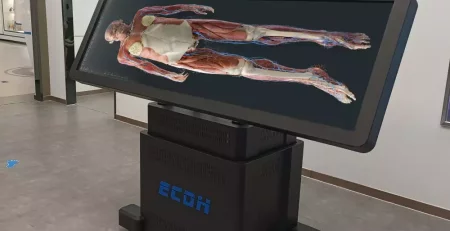Interactive Learning: How 3D Models Enhance Medical Understanding
Interactive Learning: How 3D Models Enhance Medical Understanding
Date:
At DIGIHUMAN, we are proud to present our latest advancement in medical education and anatomical modeling: the 3D Printed Lung Segment Model. This innovative product is designed to provide an unparalleled, detailed understanding of human lung anatomy, making it an essential tool for educators, medical professionals, and researchers alike.
Table of Contents
ToggleHigh-Precision Digital Anatomy
Our lungs 3D model is constructed using high-precision digitized human body data, ensuring accuracy and realism. By utilizing a full-color, multi-material 3D printer, we create models that are not only anatomically correct but also visually striking. The model features a 1:1 simulation of the physical anatomy, allowing users to explore the intricate structures of the lungs in a way that traditional models simply cannot match.
Eco-Friendly Materials
Sustainability is at the core of our manufacturing process. We use environmentally friendly resin materials to produce our lungs 3D models, ensuring that our impact on the planet is minimized. The transparent hard material used in the model not only enhances its aesthetic appeal but also provides durability for repeated use in educational settings or research environments.
Detailed Anatomical Structures
Our lung segment model showcases the complex anatomy of the respiratory system. It includes detailed representations of the bronchial tree, pulmonary artery, and pulmonary vein, with each component color-coded for easy identification. The pulmonary artery is highlighted in blue, while the pulmonary vein is represented in red. Each bronchus within the lung segments is crafted from different colored materials, providing a clear visual differentiation among the various structures.
Segmentation for Enhanced Learning
The model is segmented according to the eight segments of the left lung and the ten segments of the right lung. This split and combined lung segment model allows for flexible assembly and disassembly, promoting interactive learning experiences. Medical students and professionals can easily manipulate the model to better understand the relationships between different anatomical structures, enhancing their educational journey.
Advanced Data Sources
Our models are built on a foundation of high-quality data sourced from a comprehensive digital human dataset. This includes original tomographic data, refined segmentation data, and 3D geometric models of various organ structures. With voxel sizes as precise as 0.0384mm x 0.0384mm x 0.1mm, we ensure that every detail is captured accurately. We also use cadaveric specimens fixed by formalin as a reference, ensuring our models reflect real anatomical specimens.
Conclusion: Elevating Medical Education
At DIGIHUMAN, we believe that education should be as immersive and interactive as possible. Our 3D Printed Lung Segment Model is more than just a teaching tool; it’s a gateway to a deeper understanding of human anatomy. We are committed to providing high-quality, innovative solutions that meet the needs of the medical community, and we are excited to see how our model will enhance learning and research in the field.
Related Posts
 Blog
BlogAnatomy as a Major: Bridging Education and Innovation in Medical Training
Is anatomy a major? Absolutely, anatomy is a major that offers students a comprehensive understanding of the human body, essential...
 Blog
BlogUnderstanding Systemic Anatomy: A Comprehensive Overview
Systemic anatomy is a specialized branch of anatomical science that focuses on the study of the various systems within the...
 Blog
BlogIs Anatomy on the MCAT? Understanding Its Importance
Is anatomy on the mcat? The question of whether anatomy is on the MCAT can be answered with a resounding...
